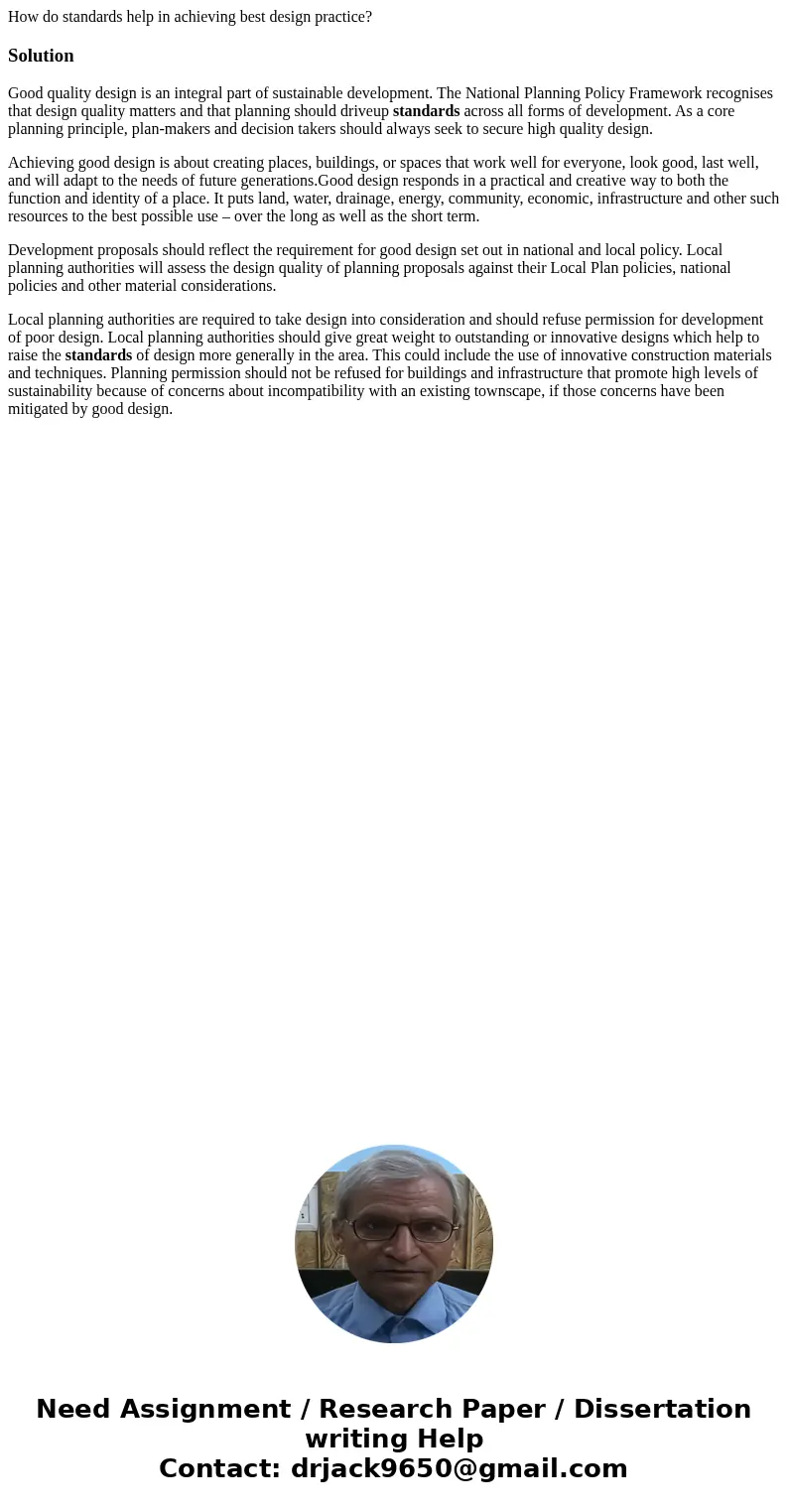How do standards help in achieving best design practiceSolut
Solution
Good quality design is an integral part of sustainable development. The National Planning Policy Framework recognises that design quality matters and that planning should driveup standards across all forms of development. As a core planning principle, plan-makers and decision takers should always seek to secure high quality design.
Achieving good design is about creating places, buildings, or spaces that work well for everyone, look good, last well, and will adapt to the needs of future generations.Good design responds in a practical and creative way to both the function and identity of a place. It puts land, water, drainage, energy, community, economic, infrastructure and other such resources to the best possible use – over the long as well as the short term.
Development proposals should reflect the requirement for good design set out in national and local policy. Local planning authorities will assess the design quality of planning proposals against their Local Plan policies, national policies and other material considerations.
Local planning authorities are required to take design into consideration and should refuse permission for development of poor design. Local planning authorities should give great weight to outstanding or innovative designs which help to raise the standards of design more generally in the area. This could include the use of innovative construction materials and techniques. Planning permission should not be refused for buildings and infrastructure that promote high levels of sustainability because of concerns about incompatibility with an existing townscape, if those concerns have been mitigated by good design.

 Homework Sourse
Homework Sourse